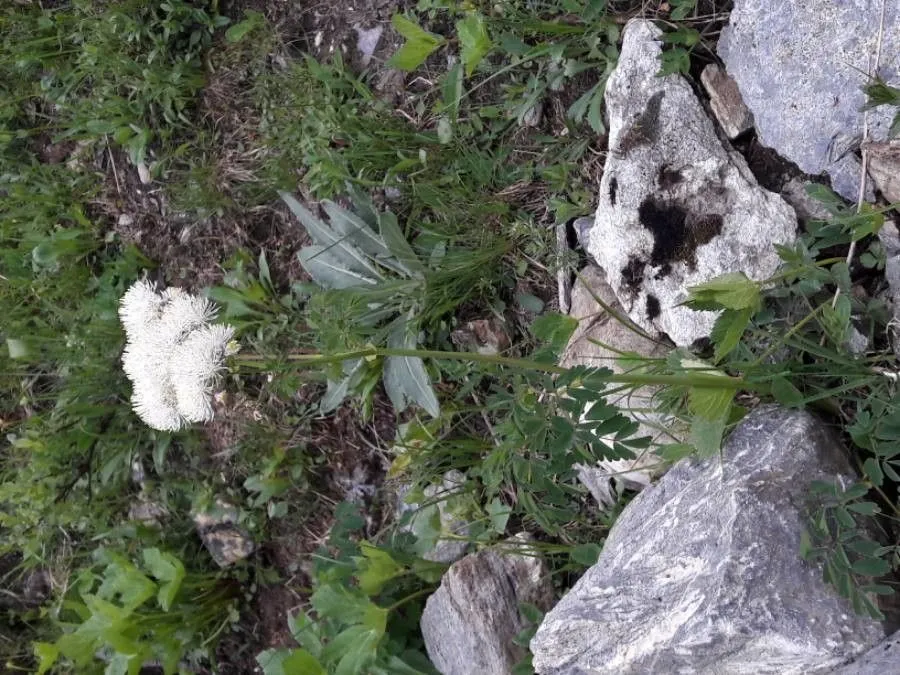
Author: L.
Bibliography: Sp. Pl.: 547 (1753)
Year: 1753
Status: accepted
Rank: species
Genus: Thalictrum
Vegetable: False
Observations: Europe to C. Asia and W. Türkiye
French meadow-rue, scientifically known as Thalictrum aquilegiifolium, is a captivating perennial that has long enchanted botanists and garden enthusiasts alike. First officially named in the mid-18th century, its detailed documentation can be traced back to the seminal publication “Species Plantarum” in 1753, attributed to the renowned botanist Carl Linnaeus.
This species is a prominent member of the Ranunculaceae family, a diverse group of flowering plants often celebrated for their ornamental value. Native to a broad geographic range, French meadow-rue thrives from Europe through Central Asia and extends into Western Türkiye, adapting to a variety of climates and terrains.
Characteristically, Thalictrum aquilegiifolium boasts finely divided, delicate foliage reminiscent of Aquilegia or columbine, hence part of its scientific name. The leaves form a lush, green backdrop that beautifully offsets its true crowning glory – the flowers. During its blooming season, the plant produces an abundance of airy, plume-like flower clusters. These flowers, often in shades of soft pink, lilac, or white, rise above the foliage on tall, slender stems, creating a cloud-like effect that adds a sense of lightness and movement to the garden landscape.
Beyond its aesthetic appeal, French meadow-rue holds a place in ecological garden design. It is known to attract various pollinators, including bees and butterflies, thereby supporting local biodiversity. The plant prefers moist, well-drained soil and can flourish in both full sun and partial shade, making it a versatile choice for different garden settings.
In traditional European horticulture, French meadow-rue has been utilized not only for its beauty but also for its resilience and ability to form striking displays in naturalistic planting schemes. Its presence can turn any garden into a tranquil haven, blending seamlessly with other perennials and complementing a wide array of garden styles.
For garden enthusiasts looking to introduce a touch of elegance and ethereal beauty to their plantings, Thalictrum aquilegiifolium offers an unparalleled option. Its historical roots, ecological benefits, and scenic appeal make it a cherished addition to any botanical collection.
Deu: akeleiblättrige wiesenraute
Dan: akeleje-frøstjerne
Eng: french meadow-rue, meadow rue, columbine meadow-rue
Nob: akeleiefrøstjerne
Nno: akeleiefrøstjerne
Swe: aklejruta, lehtoängelmä
Fin: lehtoängelmä
Nld: akeleiruit
Fra: pigamon à feuilles d’ancolie, colombine panachée, colombine plumeuse
Cym: arianllys ffrainc
En: French meadow-rue, Columbine meadow-rue, Meadow rue
Cs: Žluťucha orlíčkolistá
Da: Akeleje-frøstjerne
Nl: Akeleiruit
Fi: Lehtoängelmä
Fr: Pigamon à feuilles d’ancolie, Colombine panachée, Colombine plumeuse
De: Akeleiblättrige Wiesenraute
It: Pigamo colombino
Nb: Akeleiefrøstjerne
Nn: Akeleiefrøstjerne
Sk: Žltuška orlíčkolistá
Es: Talictro
Sv: Aklejruta, Lehtoängelmä
Cy: Arianllys Ffrainc
© copyright of the Board of Trustees of the Royal Botanic Gardens, Kew.
© copyright of the Board of Trustees of the Royal Botanic Gardens, Kew.
© copyright of the Board of Trustees of the Royal Botanic Gardens, Kew.
Taken Jun 30, 2019 by Franco Colnago (cc-by-sa)
Taken Jul 20, 2018 by Denis Bastianelli (cc-by-sa)
Taken Jul 20, 2018 by Denis Bastianelli (cc-by-sa)
Taken Mar 29, 2018 by Carine Hugues Dit Ciles (cc-by-sa)
Taken May 28, 2020 by Bert Matteo (cc-by-sa)
Taken Jun 16, 2022 by Jacques Zuber (cc-by-sa)
Taken Jul 22, 2021 by Cédric Jankowiak (cc-by-sa)
Taken Jul 9, 2016 by huy HO (cc-by-sa)
Taken Jul 20, 2018 by Denis Bastianelli (cc-by-sa)
Taken Jul 22, 2014 by Tela Botanica − Ans GORTER (cc-by-sa)
Taken Jul 5, 2014 by Tela Botanica − Geneviève Botti (cc-by-sa)
Taken Jun 26, 2021 by Nicolò Lo Cicero (cc-by-sa)
Taken May 26, 2020 by Steffen Lindemann (cc-by-sa)
Taken May 31, 2022 by Annemarie Ahrens-Stehle (cc-by-sa)
Taken May 28, 2012 by Irmgard Groß (cc-by-sa)
Taken Jul 22, 2021 by Cédric Jankowiak (cc-by-sa)
Taken Jun 16, 2022 by Jacques Zuber (cc-by-sa)
Taken Jun 30, 2019 by Franco Colnago (cc-by-sa)
Taken Jul 20, 2018 by Denis Bastianelli (cc-by-sa)
Taken Jun 24, 2017 by Yoan MARTIN (cc-by-sa)
Taken Oct 3, 2022 by louiz gv (cc-by-sa)
Taken Jul 5, 2022 by roses maria (cc-by-sa)
Taken Aug 12, 2022 by Michał Maciążek (cc-by-sa)
Taken Jul 22, 2021 by Cédric Jankowiak (cc-by-sa)
Taken Mar 13, 2021 by Bioeduca (cc-by-sa)
Taken Jun 29, 2013 by Tela Botanica − Paul FABRE (cc-by-sa)
Taken Aug 4, 2019 by masciadri carlotta (cc-by-sa)
Taken Jul 13, 2013 by Tela Botanica − Yoan MARTIN (cc-by-sa)
Taken Jul 13, 2010 by Tela Botanica − Yoan MARTIN (cc-by-sa)
Ph maximum: 7.5
Ph minimum: 7.0
Light: 6
Atmospheric humidity: 8
Bloom months: [‘may’, ‘jun’, ‘jul’]
Soil nutriments: 7
Family: Myrtaceae Author: (F.Muell.) K.D.Hill & L.A.S.Johnson Bibliography: Telopea 6: 402 (1995) Year: 1995 Status:…
Family: Rubiaceae Author: Pierre ex A.Froehner Bibliography: Notizbl. Bot. Gart. Berlin-Dahlem 1: 237 (1897) Year:…
Family: Sapindaceae Author: Koidz. Bibliography: J. Coll. Sci. Imp. Univ. Tokyo 32(1): 38 (1911) Year:…
Family: Asteraceae Author: A.Gray Bibliography: Pacif. Railr. Rep.: 107 (1857) Year: 1857 Status: accepted Rank:…
Family: Fabaceae Author: Medik. Bibliography: Vorles. Churpfälz. Phys.-Ökon. Ges. 2: 398 (1787) Year: 1787 Status:…
Family: Aspleniaceae Author: (Cav.) Alston Bibliography: Bull. Misc. Inform. Kew 1932: 309 (1932) Year: 1932…